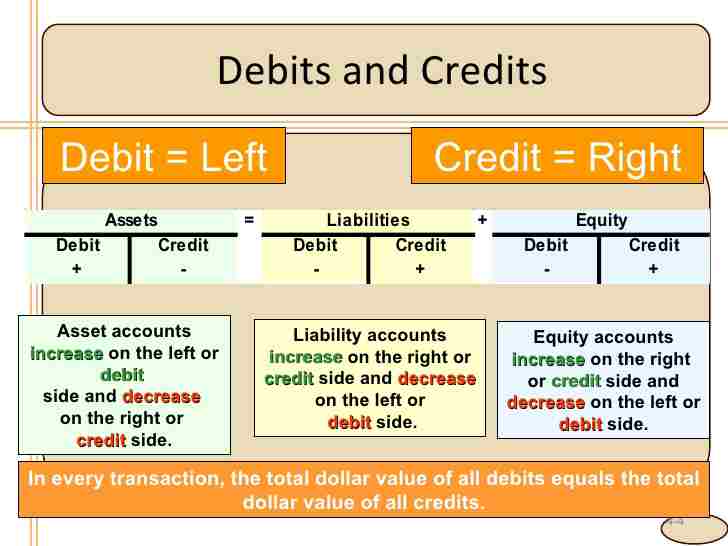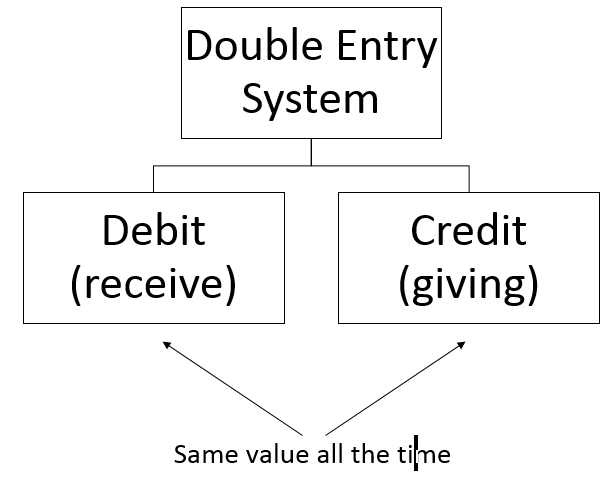Topics in Accounts
Characteristics of Double Entry System Examples on the principle of double entry system Advantages and limitations of double entry system Scheme of work, Financial Accounting, SS1, Third Term Scheme of work, Financial Accounting, SS1, Second Term Scheme of work, Financial Accounting, SS1, First Term Differences between Bookkeeping and Accounting Journal: Contents, Format, Characteristics and Advantages of Journal Bank Wire and Wire Transfer Chart of Accounts Balance Sheet ReconciliationsAcademic Questions in Accounts
According to the principles of the dual entry system, an increase in asset is credited.
A. True
B. False
The followings are true on the double entry system of accounting except _____.
A. Errors can't be made
B. It can be time consuming
C. It can be used as an accounting reference
D. It can be used to control a company's expenditure
E. There is completion of account transaction
F. It isn't difficult to implement
With regards to bookkeeping and accounting, which of the following statement is incorrect?
A. Accounting covers the entire practice of finance management
B. Bookkeeping is a branch of accounting
C. Bookkeeping is a necessary requirement when making financial statement of account
D. Bookkeepers record financial transaction in a chronological order
E. Accountant earn higher salaries than bookkeepers
F. Accounting reports assist business managers in making a more detailed decision
The debited and credited accounts are written in which column of a journal?
A. Date
B. Particulars
C. Folio
D. Ledger
E. Amount
F. None of the above
A journal may also be referred to any of the following except _____.
A. Book of original entry
B. Book of primary entry
C. Book of first entry
D. Initial book
E. Day book
F. Chronological book
Which of the following statement is true concerning bank wire?
A. Another name for bank wire is cash transfer
B. The term 'wire' in bank wire signifies a computer based programmed message sent to a bank customer in regards to their account information, transaction and other important financial notifications
C. The International Bank Account Number (IBAN) must always be involved when carrying out a bank wire process
D. The term bank wire has no significant relationship with wire transfer
E. Cyber criminals cannot utilize bank wire threats like CSRS, phishing and whaling to achieve their fradulent act
F. All the above statements are true
The following are recommendations to follow during the process of balance sheet reconciliation EXCEPT _____.
A. All balance sheet accounts should be reconciled periodically, quarterly or annually
B. Comparing the trial balance of both the payables and receivables with the respective aging schedule
C. Analysis of enteries and relocating them to a sub-ledger if need be
D. Comparing the general ledger trial balance of the account to another source; for instance, a bank statement
E. Analysis of the differences in both accounts and making appropriate correction to ensure the correctness of entered information
F. None of the above
The principle of double entry system is an important aspect of accounting. It states that: 'For every debit, there must be a corresponding credit for an equal amount of money; and for every credit, there is a corresponding debit for an equal amount of money'.
In simple terms, whatever is recorded on the debit side must be equivalent or equal to that recorded on the credit side of the account. This implies that the debit must always be equal to the credit in a dual entry system. This is summarized in the image below:

Please read on the introduction to the principle of double entry here.
The debit and credit sides make up the transactional aspects that are identified under the principle of double entry. The debit side of the transaction (abbreviated as Dr) is always present on the left side of the account while the credit side of the transaction (abbreviated as Cr) is written to its right.
Meanwhile, it is worthy of note to state that the process of keeping an account of dual entry (corresponding debit and credit) is referred to as dual or double entry system of accounting.
Please read on various examples of the double entry here.
To get a better understanding on the characteristics of the double entry system, it will be a good idea if we first understood the concepts (or characteristics) of debit (Dr) and credit (Cr) sides of an account. They are summarized below:
Please read on the advantages and limitations of the double entry system here.
The above characteristics of the debit and credit sides of an account are summarized in the image below:

Please read on the concept and types of cost here.
Below are the characteristics or fundamental principles of double entry system:
Two parties are required. They are the giver and the receiver. The party that gives out (money) is credited while that which receives the money is debited.
There are two sides of the account. This is termed the 'duality of account'. These are the debit and credit sides respectively.
The exchange is equal in amount. This implies that the amount of money given is always equal to the amount of money received in any transaction.
The sum or totality of the debit is equal to the totality of credit. To this end, there is always an equal result on both sides of the account.
It is a scientific and complete accounting system.
You can read on journals here.
Kindly share this article via the links below:

Please click here to contact Alfred if you require any of the following services:
If you need a standard website at an affordable price.
Online training on the academic subjects: biology, chemistry and basic science.
If you require an advanced smart school management system (web application) for your school.
Click here to read on Len Academy Smart School Software.
Please click here to follow Len Academy on Google News.
Amazing facts in Accounts
It is believed that bookkeeping is the only English word to contain three sets of double letters repeatedly
Notable points in Accounts
Below are the limitations or disadvantages of double entry system of accounting:
Increased usage (and cost) of books of accounts.
The accounting process can become complex.
Mistakes are possible.
Recruitment and payment of a professional may be required.
It can be time consuming.

Double entry system of accounting is defined as one that shows recorded transactions at both sides (Debit - Dr.) and (credit - Cr.) of the entries with both having equal values.
Double entry system is also termed as Dual system of accounting.
Bookkeeping can be defined as all the activities that have to do with the orderly classification and recording of financial data or business transaction.
Bookkeeping assist the process of accounting via the taking of an accurate record keeping.
Accountingis a field of study that covers the entire process and practice of managing the finances of an individual or an organization.
In smaller organizations, a bookkeeper’s job may go beyond simple transaction recording, as they may also be involved in the accounting process of the organization. On the other hand, accountants may have to record financial transaction in addition to analyzing financial transaction.
Please read more on bookkeeping and accounting alongside their differences here
Below are the importance of bookkeeping in any organization:
It brings accuracy into the recordings of the daily business transaction.
They provide the information on which financial accounts are prepared.
Aside from its importance in business organizations, it can also be used by nonprofit organizations and individuals.
It can also take record of liabilities, assets and loans. This function of bookkeeping can be crucial for many businesses.
A journal, also called book of original entry or book of primary entry or book of first entry or day book or chronological book is a book where daily transactions are recorded in a chronological order (the order of occurrence).
A journal contains the total record of all transactions made by a company. It can be distinguished into different types which will include:
Sales Journal: For recording inventory and sales.
Cash Receipts Journal: For recording money received from sales or cash inventory.
Purchase Journal: For recording all purchases made by a company.
General Journal and so on.
The content of a journal include the followings:
The date when the transaction occurred.
The description of the transaction.
Debits
Credits
Accounts affected